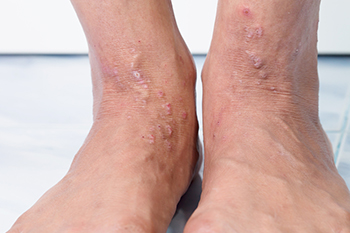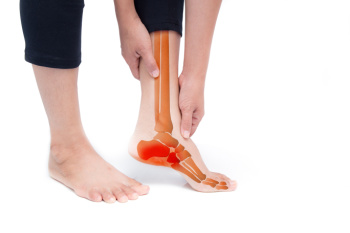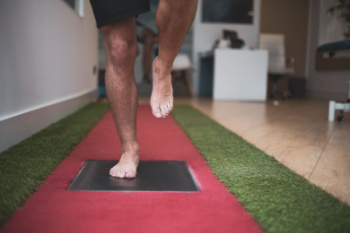
Genodermatoses encompass a group of genetic disorders affecting the skin, and sometimes, the feet serve as a significant indicator of these conditions. The foot symptoms of genodermatoses can manifest in various ways, reflecting the underlying genetic mutations. Some individuals may experience thickened, scaly skin on the soles of their feet, a common feature of certain genodermatoses like palmoplantar keratoderma. In other cases, individuals may develop blistering or ulceration on the feet due to conditions such as epidermolysis bullosa, where the skin is fragile and prone to tearing. Additionally, abnormalities in nail growth or structure can occur, ranging from thickened nails to the complete absence of nails, as seen in some forms of ectodermal dysplasia. Recognizing and understanding these foot symptoms is essential for early diagnosis and management of genodermatoses. If you have this rare foot condition, it is suggested that you are under the care of a podiatrist who can help you to manage this condition.
Some foot conditions may require additional professional care. If you have any concerns, contact one of our podiatrists of Foot Health Center of Merrimack Valley. Our doctors can provide the care you need to keep you pain-free and on your feet.
Rare Foot Conditions
The majority of foot conditions are common and can be treated by a podiatrist. Standard diagnostic procedures are generally used to identify specific conditions and treatment can be rendered. A podiatrist also treats rare foot conditions which can be difficult to diagnose and may need extra attention and care.
There are many rare foot conditions that can affect children. Some of these can include:
- Freiberg’s disease
- Kohler’s disease
- Maffucci syndrome
Freiberg’s disease - This can be seen as a deterioration and flattening of a metatarsal bone that exists in the ball of the foot. It typically affects pre-teen and teenage girls, but can affect anyone at any age. Symptoms that can accompany this can be swelling, stiffness, and the patient may limp.
Kohler’s disease - This often targets the bone in the arch of the foot and affects younger boys. It can lead to an interruption of the blood supply which ultimately can lead to bone deterioration. The patient may limp or experience tenderness, swelling, and redness.
Maffucci syndrome - This affects the long bones in a child’s foot leading to the development of abnormal bone lesions. They are benign growths and typically develop in early childhood and the bones may be susceptible to breaking.
A podiatrist can properly diagnose and treat all types of rare foot conditions. If your child is affected by any of these symptoms or conditions, please don’t hesitate to call our office so the correct treatment method can begin.
If you have any questions please feel free to contact one of our offices located in North Andover, and Tewksbury, MA . We offer the newest diagnostic tools and technology to treat your foot and ankle needs.










